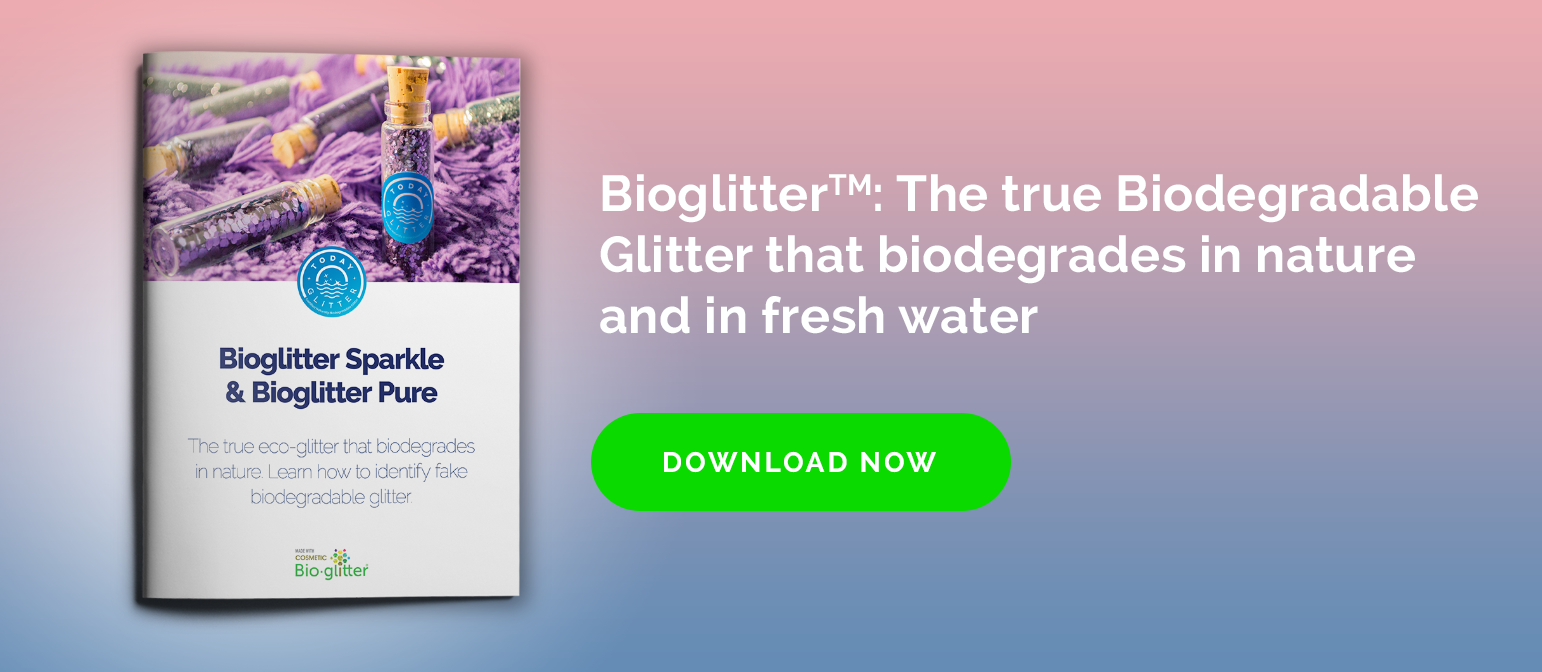Is glitter toxic? Learn why we need an alternative
Most people have used glitter at least once in their lives. It is a material that children use at school to make arts and crafts. We can also find it in cosmetics and skincare products. As harmless as it seems, regular glitter is made of plastic and may include other toxic substances like heavy metals, whose environmental impact is extraordinarily damaging.
Is glitter toxic? What are its components?
If you are a glitter lover, it may be challenging to know how significant of an impact pollution can have. Glitter can be seen as tiny pieces of plastic, making it a microplastic. It also has components considered toxic for our bodies and the environment, like aluminum, titanium dioxide, and iron oxide. All these layers that compose it turn its shiny characteristics into an ecological hazard.
The most common materials glitters are made from are PLA and PET, both plastics. Some companies that make PLA glitter claim it to be biodegradable or compostable. The truth is this polymer does not biodegrade in nature. When you break it down into tiny particles like 5 microns to create glitter, it is impossible to separate it from other garbage types.
How does plastic glitter create pollution?
Microplastic particles that compose glitter end up in our landfill or washed down the drains. Those particles will end up in rivers finding their way to the oceans and becoming part of the growing microplastics problem.
Plastic glitter is not something that can be recycled. It is impossible to separate from other materials and even its components apart. We would need industrial machinery to try to decompose it, but it requires a lot of energy and water that just go to waste to eliminate these tiny pieces of glitter. In this way, the main disadvantages of plastic glitter are:
-
Microplastics take more than 100 years to start degrading (by that time it has already contaminated our flora, fauna and created pollution)
-
Materials like PET (plastic in most glitter) can release chemicals that disrupt animals and humans’ hormones.
-
Microplastics, when burned, create highly toxic smoke.
-
Heavy metals in regular glitter are a problem since its primary use is in cosmetics.
-
Even being plastic, it is not recyclable. It is a disposable, single-use product. Tiny but super dangerous.
For these reasons and a lot more, we need to find an eco-friendly alternative. Luckily, a Biodegradable solution for glitter exists.
Eco-glitter, a biodegradable alternative
Does earth-friendly glitter exist? The answer is yes, and of course, human-friendly. We can still enjoy this shiny multi use product but in a safe way with BioglitterTM, the world’s first plastic-free and biodegradable glitter.
How can you make sure Bioglitter is safe?
To make sure a glitter is biodegradable, secure to use as cosmetics, and environmentally safe, they should comply with certificates that prove it. In this case, Bioglitter 100% plastic-free is:
-
Certified “OK Biodegradable WATER” by TÜV. (it biodegrades in less than four weeks!)
-
Verified Microplastic Free by EU, ECHA Microplastic Proposal (Jan 2019) -
Certified 100% Biobased Carbon Content.
-
FDA compliant for use on lips (is aluminum-free)
If a glitter does not pass the OK Biodegradable in the water test, it means that it contains plastic.
Also, Bioglitter does not contain heavy metals (non-toxic), is cruelty-free, GMO-free, CMR-free, and allergen-free. It is safe to use in cosmetics, body art, crafts, and more. It doesn’t harm any living creature in any of its processes. And it has won:
-
The ‘Green and Sustainability’ category at the PCHI Fountain Awards 2019 in China.
-
Gold for ‘innovation’ at In-Cosmetics Global 2017 in London, and 2018 in Amsterdam. Two years in a row!
The certifications and qualifications are objective and measured through qualified biodegradability tests. The main goal with biodegradable glitter is to get rid of the plastic glitter, consequently reduce pollution.



Thank you for this great article about glitter. It was very informative because I love using glitter. Moving forward will by glitter that be is bioglitter.